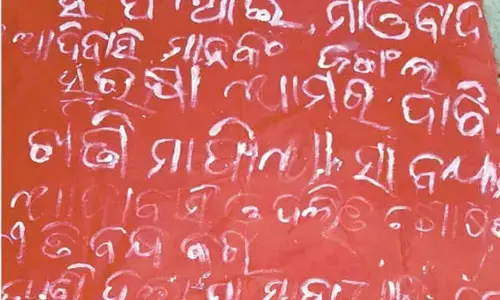Is The Ramayana Relevant?

Since God created the male and female, human beings have struggled to stabilize an ideal relationship between the two
Since God created the male and female, human beings have struggled to stabilize an ideal relationship between the two. The two are bound to depend on each other to fulfil the evolutionary need of continuing the race. This is achieved through a biological need known as sex. A system had to be evolved, so the institution of marriage came up. However, the relationship has been on edge several times. In some cultures or periods, the relationship transcended mere biological need and was called love. In most places, it was tilted in favour of man. The topic is of relevance to all times.
The ephemeral relationship between man and woman, seen in the present Western world, is getting exported to the rest of the world. It may be more correct to say that the rest of the world is aping them voluntarily or ignorantly. Until the nineteenth century, the Western world too, maintained sanctity in the institution of marriage, calling it a lifetime bond between the man and woman. Modernity has taken its toll on marriage, particularly after the rise of the woke culture. The biological need is taken care of in a synthetic form, violating the evolutionary need. The continuance of a sane society is a mirage.
In Indian civilization, marriage was a sacred bond, a lifetime commitment for the continuance of dharma. Man and woman were not merely biological partners but spiritual partners. Our scriptures illustrate this. The Ramayana analyzes kaama (lust, called love under some conditions) in several episodes illustrating the relationship between man and woman. It shows three different settings – first, in Ayodhya; second, in Kishkindha and third, in Lanka – characterized by three other gunas, sattva, rajas and tamas.
Sage Vishwaamitra relates several incidents of man-woman relationships to Rama when he takes young Rama to protect his yajna. It was like training for Rama and Lakshmana. The relationship between Sita and Rama is thus the ideal one. The episode of their marriage shows that the procedure described by Valmiki is a living tradition. Valmiki describes that Rama and Sita spoke with their hearts. It was a perfect meeting of minds, as we call it now. Biological need no doubt exists, but the relationship is more than sex. When it transcends mere physical relationships, it is called love. It is the topic of all great poetry. The cathartic effect it has on the reader is due to the presence of ideal characters whose unconditional love is beyond sensual love. It was called sringara rasa, which melts our hearts. Literary critics tell how the man and women find pleasure in the mere presence of each other. There is no distance between hearts, nothing hidden, and one mind in two bodies. This sringara is characterized by sattva guna.
A slightly diluted relationship is shown in Kishkindha, which is close to the behavior of most people. Equality in the man-woman relationship is maintained. However, the refined sentiments we see in the pure love of Rama and Sita would be absent. This sringara is characterized by rajo-guna, where physical desire is prominent.
Lanka presents the third type of relationship. Ravana’s lust is supreme. Vibhishana taunts Ravana that he had forcibly brought thousands of women by defeating or killing several kings. Hanuman sees the unfortunate women sleeping, embracing one another, looking like a long chain. Some women hugged musical instruments like the veena or drums or trumpets. They were like slaves for the sex of one man, Ravana. This sringara is the tamasa relationship, the lowest form in which a woman is merely an object for quenching one man’s lust.
The emerging situation in global civilization is going beyond the above three relationships. Individualism dominates, as we see in fleeting relationships and the LGBTQ culture. A modern student may even wonder whether the ideal people described in Ramayana existed. We in India do not doubt the ideal and practice have not disappeared from Indian society. But should we fall prey to the invading trends which would produce cultural orphans? The Ramayana is highly relevant now as it has been in history.

















